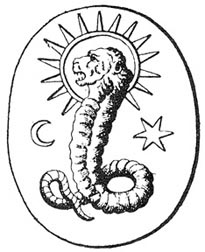Gnostic tradition is a vast genealogy of mystical belief systems that emerged at the beginning of the Christian era, integrating various religions and mythologies in its syncretism.
The core tenant of gnosticism is the material world is a world of lies and obfuscation created by the Demiurge, a fake deity. This entity keeps us all in this prison, away from the truth of the spiritual world, where the real Creator lies.
But the Demiurge cannot entirely keep truth out of our reach. It suffuses through the world of lies, and we can get glimpses of it, we can assemble clues, and we can reach the truth of ourselves and the truth of the world, free our eternal soul from the illusion.

We do know the Gnosis is an important thing in Homestuck. If only because one of the four original main characters, Jade, has the chumhandle gardenGnostic and possesses some keys to the story. She knows of the game, of the future before everyone else and stays cryptic about it until the Kids face apocalypse.

Jade is, originally, the provider and retainer of Knowledge. She's the one supposed to know.
Although her understanding on things, and the extent of her science, are both severely challenged in the course of events, to the point where by Act 5, after the death of her Dream Self (important event), she is basically on the same page as everyone else.
This break in the story, which we may call the end of the initial arc (if we do consider Acts 1-4 as an unity), thus coincides with Jade no longer detaining particular knowledge of the world.
Then gnosticism as a theme seems to disappear from the front of the story until YALDABAOTH is revealed as the final trial Caliborn must face before becoming the main antagonist of the entire mythology.

Yaldabaoth is the central figure of gnostic mythology, the Demiurge.

It is an appropriate character for a story working on multiple metal levels, with multiple author figures...
But before talking more about my own perspective... I'd like to know what you all think! :)
